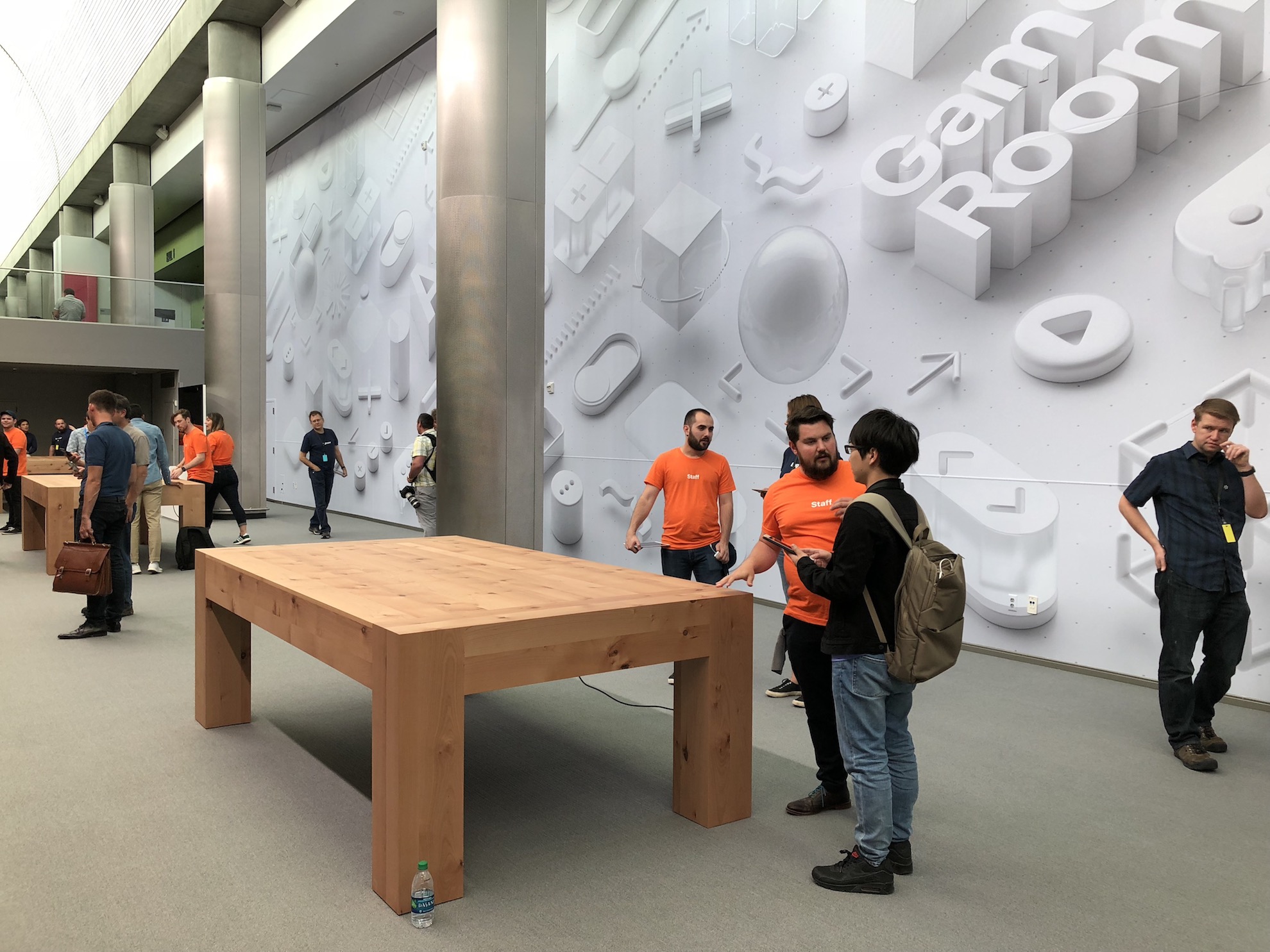Robotic developers continue to telegraph from San Jose. And if everyone already knows about the technical news of WWDC - yes, and we
wrote about it, this time
mc_murphy vani2 bealex talk about the experience that the participants of the conference receive, and other issues that usually remain behind the scenes.
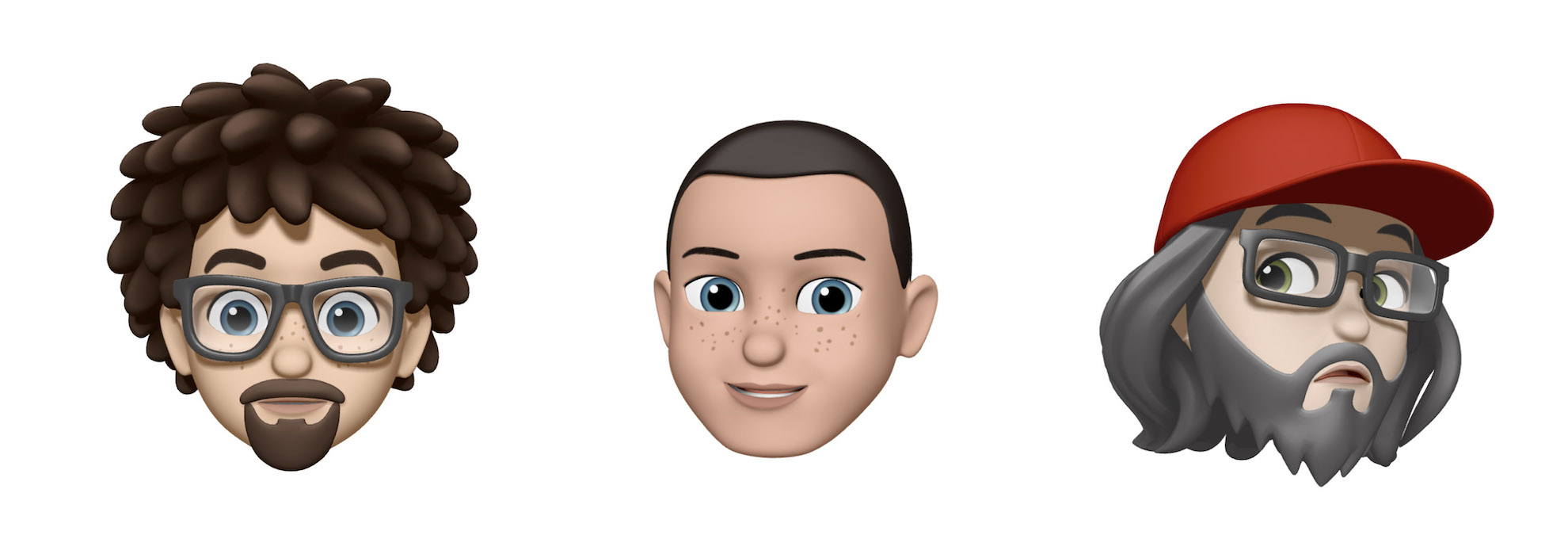
Ivan Vavilov, Head of iOS Team

Organization of the conference
You won’t take care of the organization - Apple has been holding WWDC for a long time and polishing everything. In the US, a whole culture of standing in line: they were at the keynote, for food, toilets, to the store. The queues are organized very cool and move fast enough. Projectors, stage, rows of chairs - everything is smooth, not to carp, it is clean and pleasant to be everywhere. The halls are large, there were sockets in almost all the chairs. Throughout the McEnery Convention Center there was WiFi and tables with Internet over a wire at a speed of about 500 Mbps, HomePod was playing along all the corridors, and they were synchronized with one audio track. At the conference, I personally lacked good coffee, the food was standard American - a lot of sweet, and not very tasty, but you will not stay hungry.
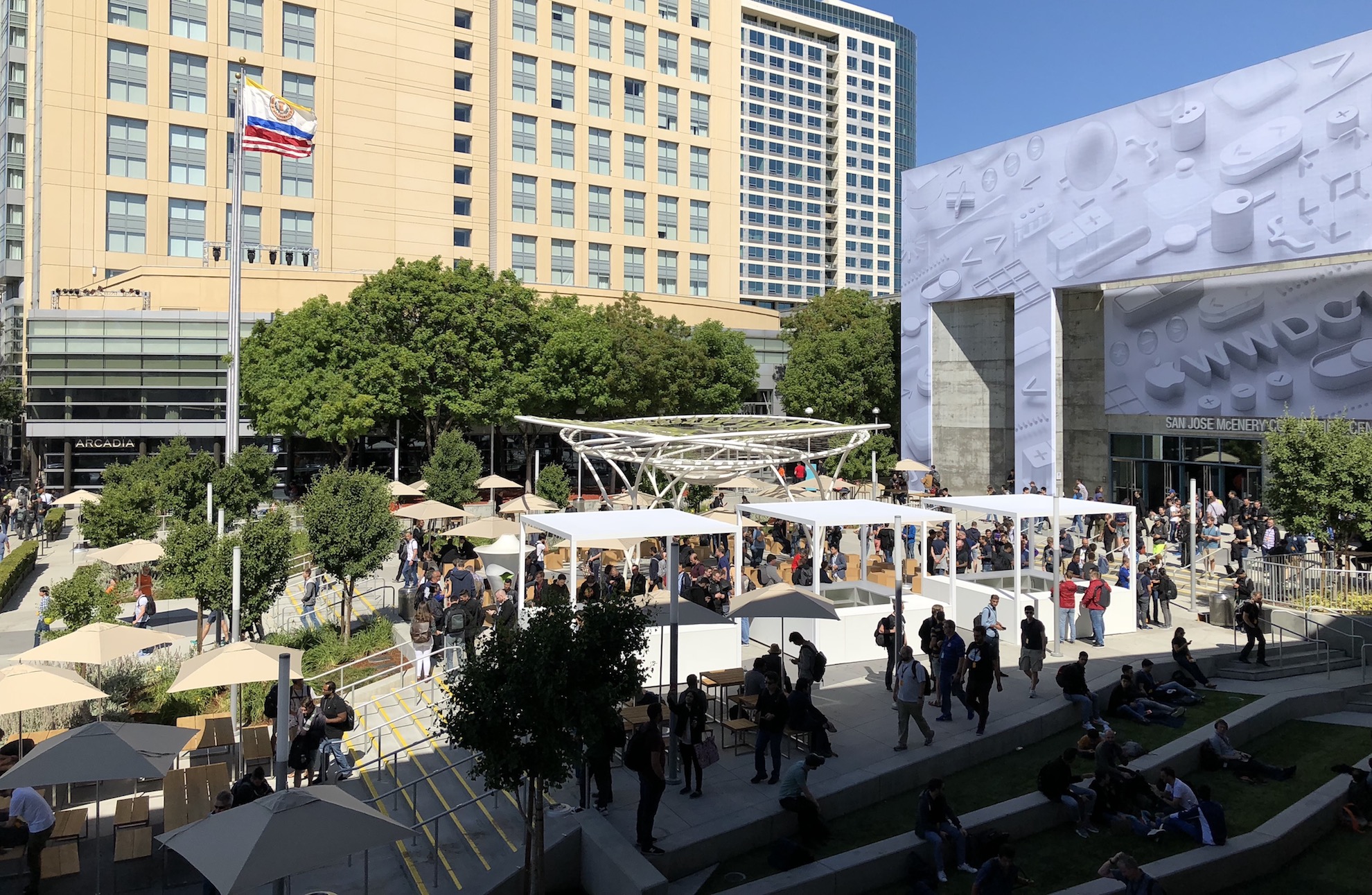
At every WWDC you can buy souvenirs with conference symbols. We did not want to lose 2 hours in the queue on the first day, so we went to them in the second - the queue was smaller, but, apart from XL + sizes, there was nothing. Honestly, dumb-skinned vests, bags, shopping bags, thermoses, more like hand grenades, children's t-shirts made from floor cloth, I was not satisfied - for me this is not the level of what Apple produces. However, the store closed on Thursday, as all bought up.
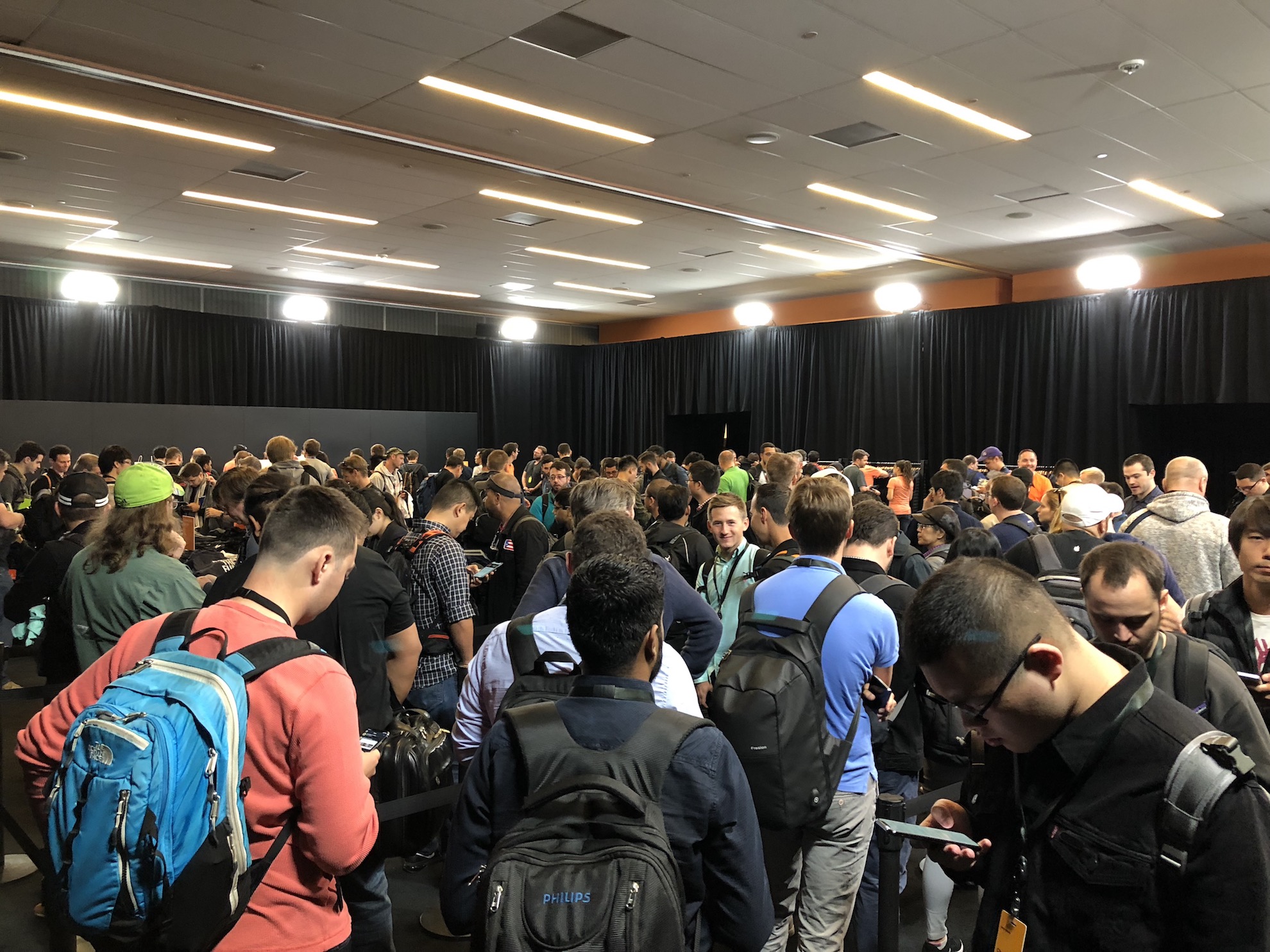
Laboratories
The main feature of WWDC is the so-called technical laboratories. Their full weekly schedule appears right behind Keynote. This year there were 12 zones with Apple engineers, all of them are divided by topics, the work time depends on the topic, as a rule, it takes 2-3 hours, the same lab can be held within 1-2 days. So, if you asked for something on the first day, you can turn on the radar, prepare the source code, and come the next day. Some topics are quite popular (Networking, UICollectionView), there is a queue for them, but in my experience, in less than an hour it diverges. Rarely, you immediately get on an engineer who is ready to answer your question, so colleagues will send you to another - and this can happen several times. This shows how strong the specialization of engineers is. Sasha, for example, got to the UILabel developer and asked how to add links without bugs - the answer is “no way”, and I talked to the guys who are engaged in NSURLSession and got an answer to the question why they haven’t yet done a renewable URLSessionUploadTask - “because there is no industry standard”. Of course, you should not expect answers to all your questions, it is highly recommended to start a radar or prepare a project for display. The impression was that the engineers would not really let you go until they answered the question, no one is rushing, despite the queues. I noticed that every day there was a Swift Open Hours lab - this shows how interested Apple is in promoting and developing the language and supporting tools, in particular, the Swift Package Manager.

Work organization
From conversations with engineers, it became a little clear how they work: they don’t have any grades as such, they are all engineers, but everyone has a manager with whom they discuss tasks. The tasks themselves come from the so-called. DRI, as I understand it, is a kind of an analogue of our managers, they can also be with a technical background, designers can have it in the same way. DRIs are already responsible for performing tasks for the vice presidents.
It is interesting that at the same time the engineer may have several tasks from different "customers" (DRI). Priorities, assessments are set locally by the engineer and supervisor. According to one of the engineers, there are tasks with the statement “it should work” and that's it. Here you have to do ASAP.
Someone honestly admitted that things may differ slightly in different teams - the processes of Continious Integration, the analysis of radar. Unfortunately, the main focus is on creating new features, so in most cases only critical bugs are fixed. But despite this, no one forbids to start radar with a note feature request and hope for success.
Apple keeps everything secret before its presentations, so often developers, doing some task, can only guess at what puzzle it will stand. Of course, developers' awareness is different, and without signing an additional NDA, this is not complete. From the side it seemed that Apple is not so different from all other companies - before the September release, engineers will have a series of features, bug fixes and optimizations.
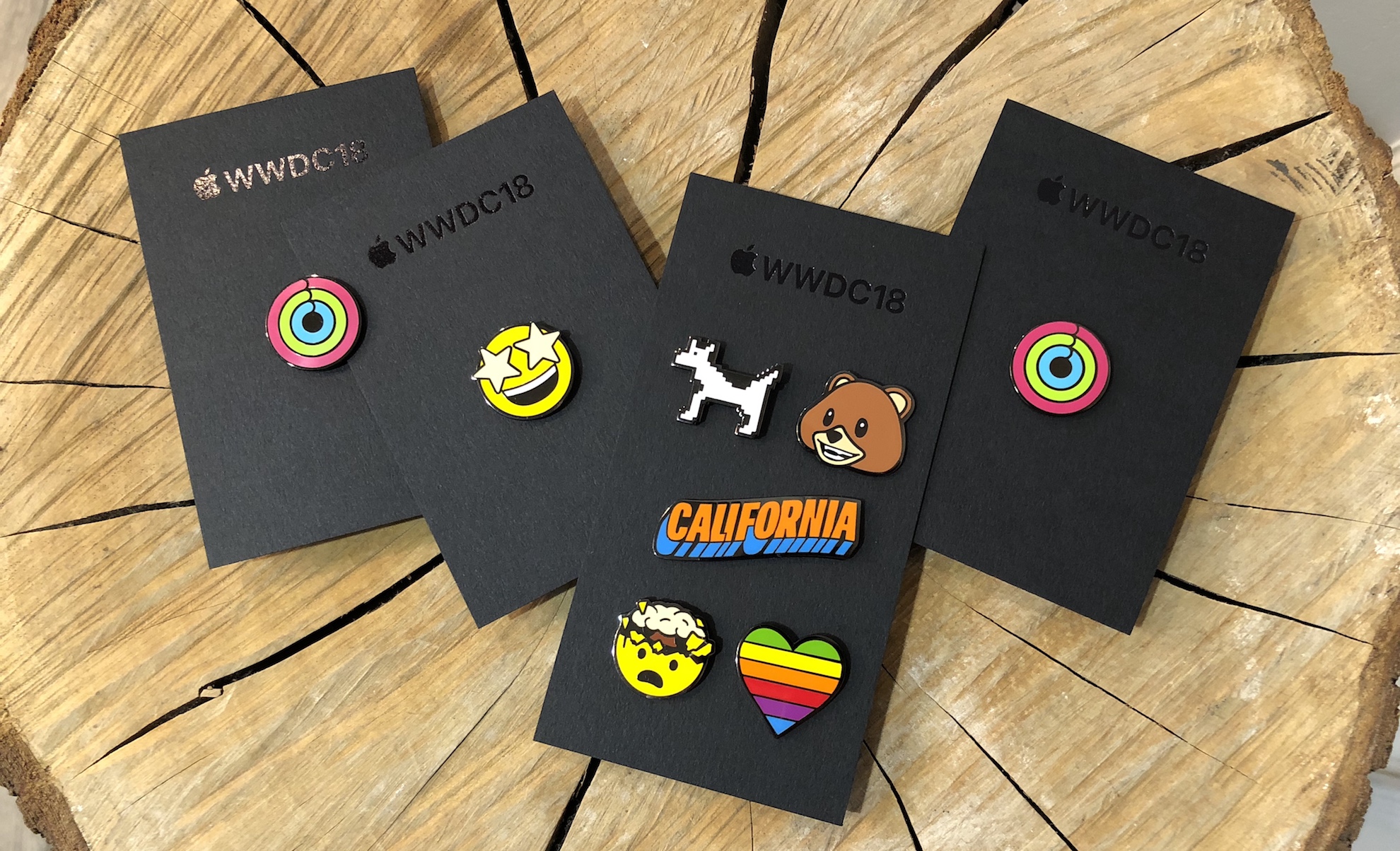
Alexander Babayev, Technical Director, RMR-St. Petersburg
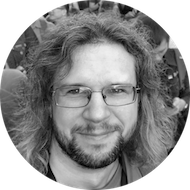
Year after year, arriving at WWDC or following a conference from Russia, I am waiting for news about development tools. It is clear that there are new SDKs, it is clear that the old ones are developing, and occasionally we are even given new pieces of hardware. Development tools used to not be so lucky.
And do not need to be reminded that the new Xcode came out - only in the last couple of years it began to look like a normal IDE. Up to this point, the agonizing cries of Xcode users were heard from afar. But in the last couple of years everything has become much, much better.
In 2018, the developers received not only the Xcode update - the system itself became better. The dark theme that gathered applause is really convenient for working at dusk. Until now, it was necessary to use AppCode, and in the "full screen" mode (and test applications on the connected device) to work in a dark theme, and now - please, without any extra effort: Xcode and all other applications are dark. And how beautiful is the new dynamic theme with the desert! Slightly reminiscent of frozen Aerial screensavers.
Everything else has been updated and literally:
- The auto-completion mechanism in Xcode has become better; it is more convenient to work with documentation and code navigation. There was a multi-cursor and marks about changes in the code fields. Returned the folding of the code, which disappeared after last year's rewriting of the editor.
- They also brought improvements to Interface Builder. They singled out a component library in a separate panel; it is more convenient, they say. We'll see.
- Instruments received custom tools in updates.
- Soon (not in the first beta, but it seems to be before the release) promise the AutoLayout profiling system.
- Metal debuggers also bleed.
- The default is now using the “new” build system. It works better with dependencies, rebuilds less and works in parallel.
- Testing can also now be parallelized, and run tests in random order.
- Applications can now be “certified” by Apple. And at some point, the company will prohibit the launch of unauthenticated applications. The application itself after such a procedure may not be distributed through the App Store.
- GitLab and Bitbucket support was connected to the already existing GitHub.
As you can see, very, very much has changed. But also Swift 4.2 with a few nice changes brought up. Here is what appeared:
- A convenient way to get a list of all cases for enum.
- #warning and #error
- the ability to write interfaces to dynamic programming languages, while only for property - methods will be connected later. This is mainly done for interacting with Python.
- the possibility of writing specialized extensions (conditional conformances) - it appeared already in 4.1, but in 4.2 it worked as it should.
- working with random numbers (and mixing arrays).
- A new structure for working with object hashes.
- several new methods of working with collections.
- Bool.toggle ()
Unfortunately, they did not manage to finish Swift 5, which they promise only next year. Therefore, few changes.
New dress turned out great. I really don’t intend to run away from AppCode, it is also developing very fast, and it also works more pleasantly in it. And it is updated not once a year, but constantly. But we're talking about Apple products right now, right?
The remaining changes, as I said, are not revolutionary. But that does not make them worse. AR took off from the state of "toy" in the category of the tool with which you can work. The ability to train a neural network using CreateML is a great way to improve the solution of a whole class of problems, which we will do after returning from a conference. And the acceleration obtained in iOS 12, we have been waiting for the last five years.
Separately surprised by the emergence of iOS-applications under macOS (News, Promotions, Home and Voice Recorder). Details told us insanely little, but the network has a place where you can read, if you want to figure out: here is this fellow twitter:
twitter.com/stroughtonsmith is filled with information. He has picked it all up and described how you can write UIKit applications for macOS yourself, what restrictions are there, what Apple developers still have to do (there are still enough sharp corners:
twitter.com/stroughtonsmith/status/1005104334546309120 ) and so on. And if someone wants to try Marzipan himself, recipes have already appeared on the network for this, for example, such a
github.com/biscuitehh/MarzipanPlatter . I have not tried and do not plan yet, so I’ll not say anything about performance.
In general, despite the lack of new glands, WWDC turned out notable. Let's go now work.
Artur Sakharov, Technical Director

In addition to the sessions, there is a lot of interesting things happening at the conference. Many visitors are not developers, and Apple’s task is to make the WWDC informative and interesting for everyone.
The conference provides for a system of consultations with Apple experts, and some of them are organized according to the principle of booked audiences. You can consult on the design and UX with the Human Interface Design team, with the review experts on the publication in the AppStore, with the marketing team to promote applications.
Several years ago, it was necessary to stand on the street from 6 am to enroll in the list, now the distribution takes place on the principle of a lottery, leave a request at 7 am online, and the system automatically issues slots on an arbitrary basis.
Design review by appointment
We went to show the not yet released scenarios of one of our banking projects to make sure that everything was designed correctly. At the meeting, you get access to two Apple designers for half an hour, recording audio-video is forbidden, just speak and draw in special notebooks for wireless frames. For those who are not strong in the language, you can ask for a technical translator.
Of course, the experts do not do any complete immersion in the project, but their comments immediately suggest the right thoughts, and correctly formulated questions allow us to spend time with great benefit. After the session, we even wondered how we didn’t think about it at the design stage.
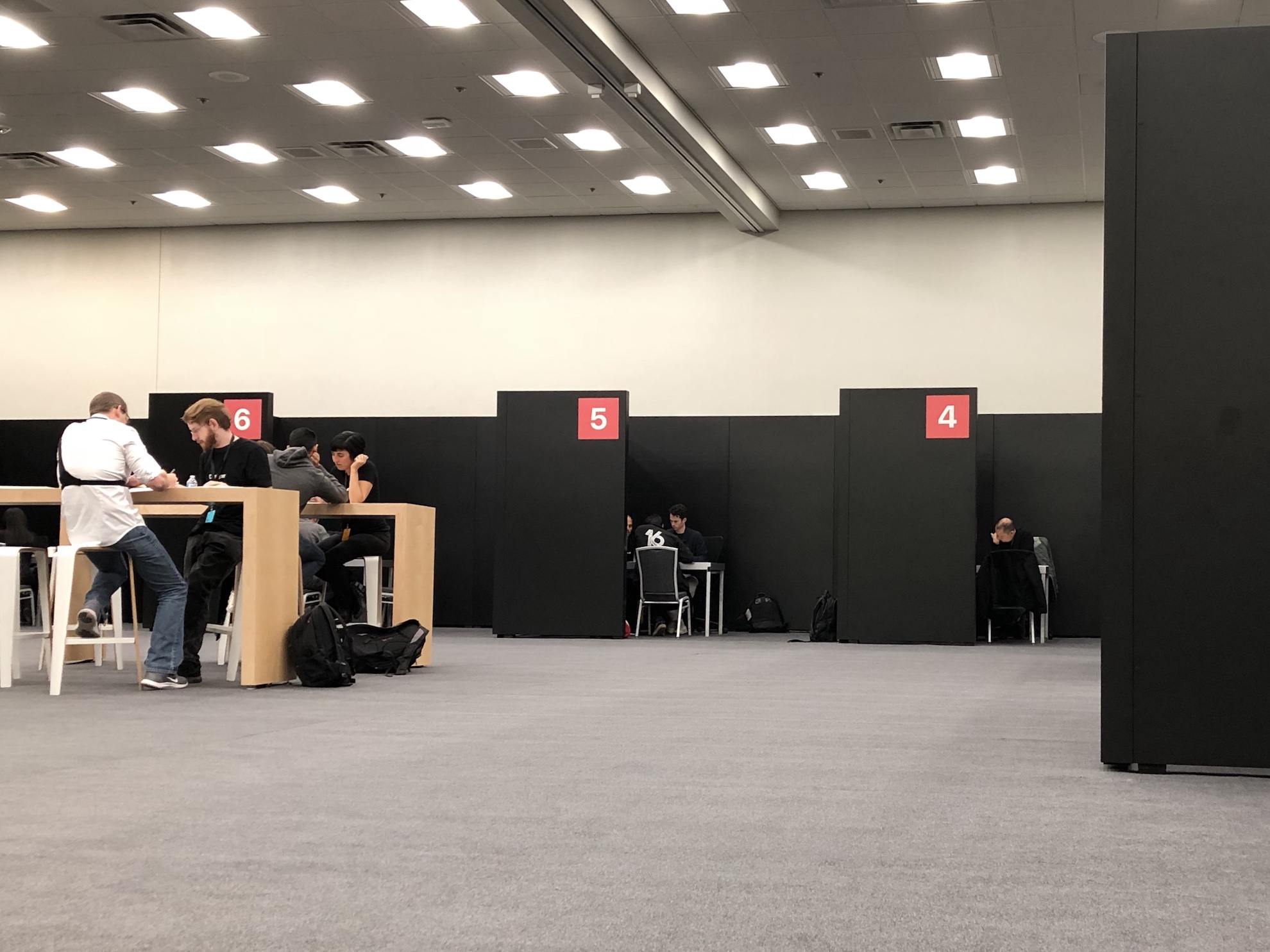
Podcast studio
The conference center has a soundproofed studio for recording audio podcasts. Time is given an hour, a sound engineer is sitting in the studio, you can talk about anything in a group of up to 4 people. There is even an audio input to call relatives in Russia, for example :)
We recorded the issue for those of our colleagues who did not follow all the sessions of WWDC, discussed the announcements and tried to compare all this with our projects.
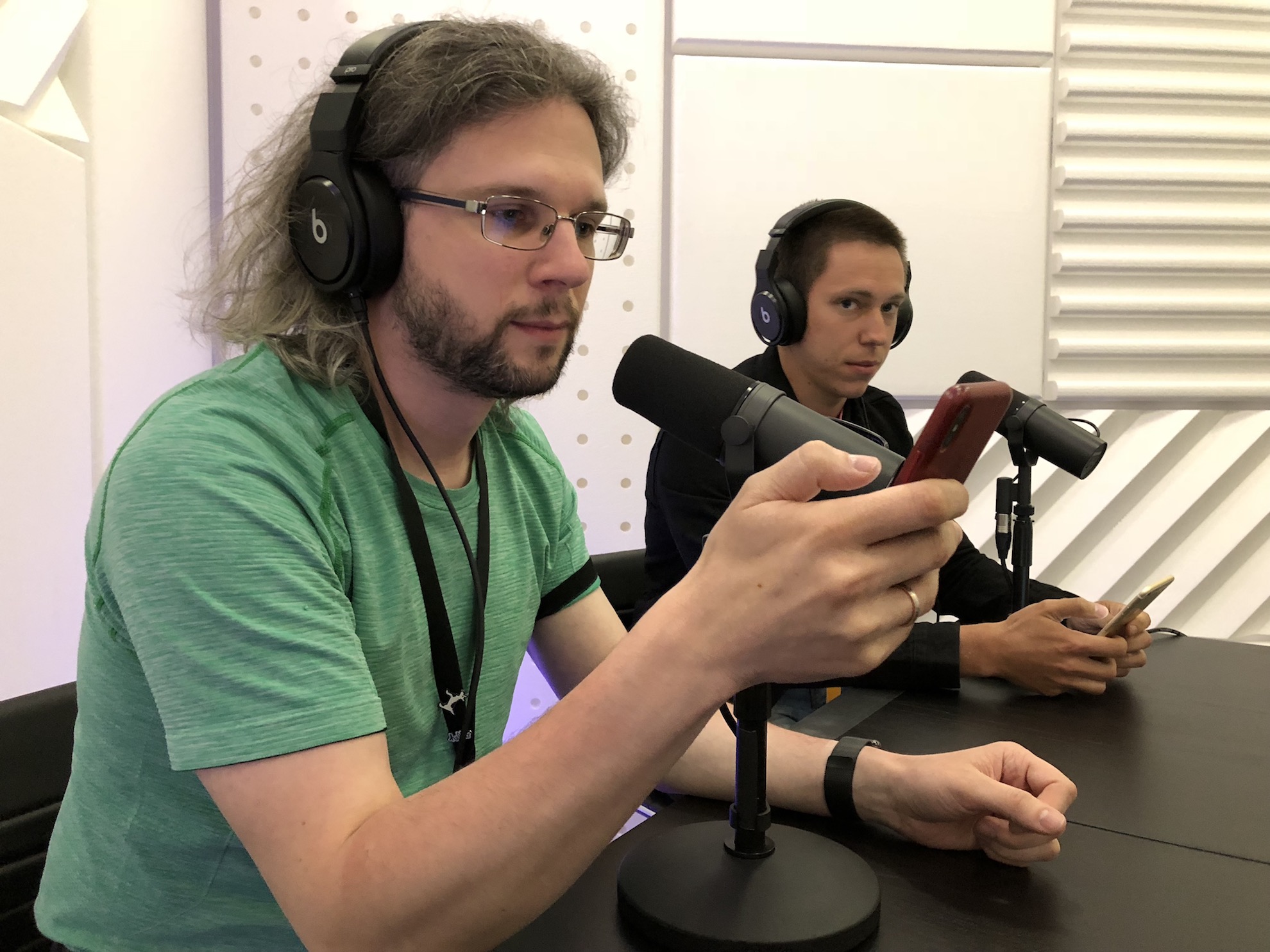
Lunchtime sessions
Three days out of five for lunch are held sessions that are not broadcast over the Internet and which cannot be filmed by yourself - Lunchtime Sessions. In past years, Buzz Aldrin, Michelle Obama, Bill Nighy and many others came. Usually these are topics that concern development only indirectly, but set the right context and attitude.
This year were the "space archeologist" Sarah Parsak (about images from space, which ancient civilizations and cities find), Rajesh Anandan from Unicef (about how IT helps children attract attention and investors to help African settlements) and Daniella Feinberg from Pixar (about generative landscapes in films and algorithms that allow you to achieve realistic environments and lighting).
Experts at WWDC
Of course, the conference brings together the best experts in the industry, and many come not only to see, but also to show themselves.
Two full-fledged conferences are door-to-door: AltConf (for iOS and macOS developers, where non-Apple employees speak) and Layers (a design conference with the best minds in the industry). It seems that AltConf alone surpasses the Russian Mobius and DroidCon in the number of sessions.
In the evenings in the theaters of San Jose arrange a show and face to face podcasts with experts. This year went on to record The Talk Show John Gruber, ATPLive and RelayFM. You can listen to what computer journalists with 20 years of experience think about announcements and updates, and I can tell you that they are much more optimistic and informed than our public. When everyone writes “nothing new, Apple is no longer a cake” in our blogs and articles, these guys project the trends for a couple of years ahead and watch the new future of the whole platform emerge from the announcements-bricks. Quite interesting and eliminates pessimism and whining.
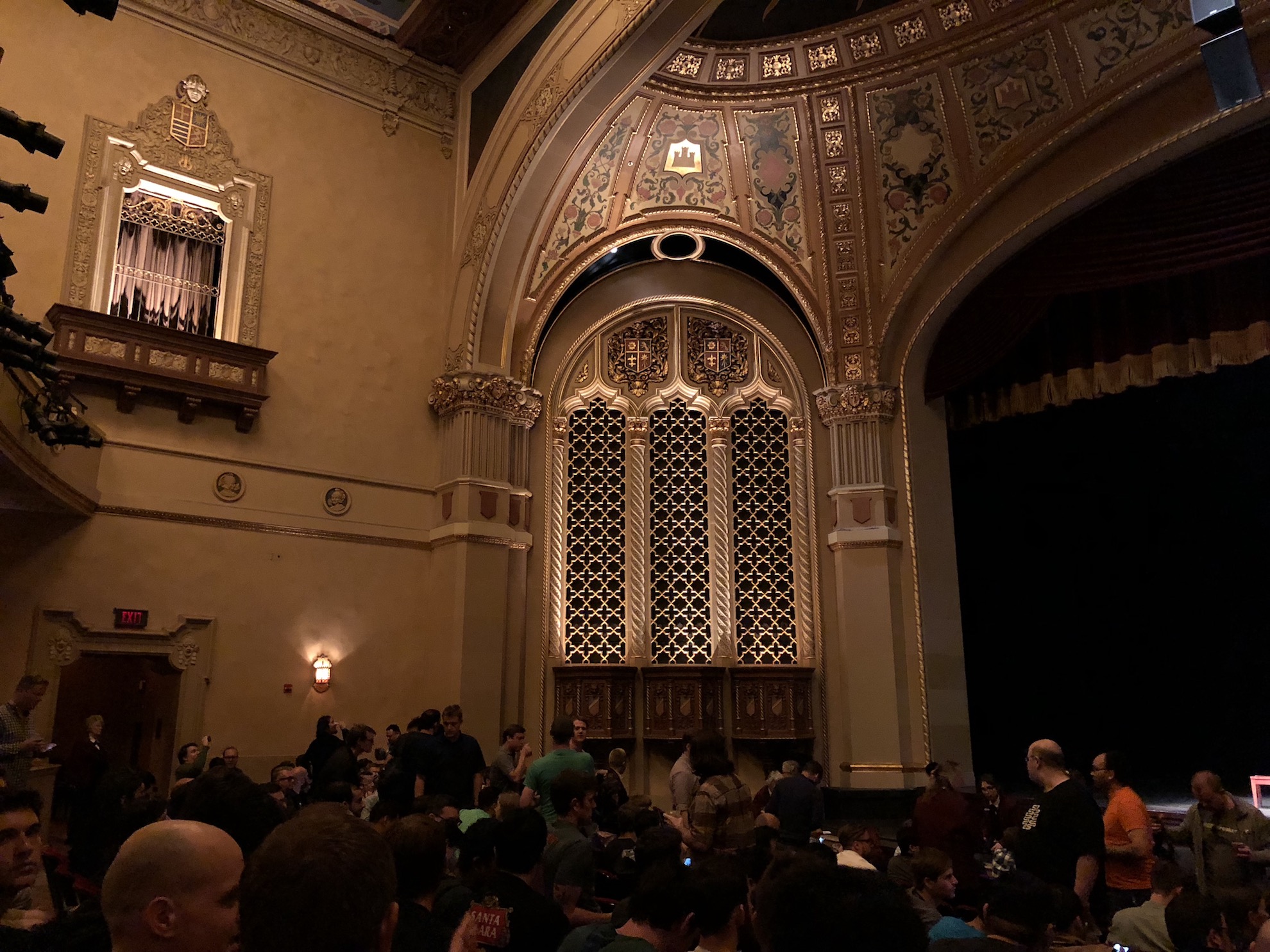
Demo zone ARKit 2
You already know everything about updates in ARKit: the ability to watch augmented reality from several devices at the same time, world textures that can be used for reflections, scanning three-dimensional objects.
To touch it all alive, special tables were set up on the ground floor and SwiftShot multiplayer game was written in augmented reality. It is necessary to knock down the enemy's wooden towers with a slingshot, and in this story they organized 2 on 2 matches on four iPads. The prize was awarded a special badge, and all 5 days there was a queue. Everything worked fine.
